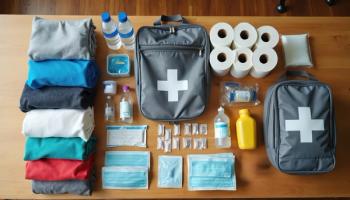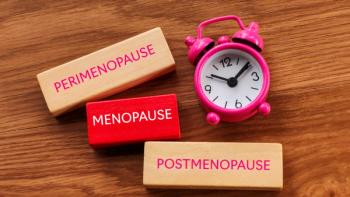
- April 2018 Respiratory Health
- Volume 84
- Issue 4
The Barbershop Trial: Key Takeaways
On March 12, 2018, the New England Journal of Medicine published a cluster-randomized trial of an intervention by pharmacists who were operating under collaborative practice agreements to initiate, titrate, monitor, and otherwise manage drug therapy for non-Latino African American men in barbershops.
Yes, That Is Right: The Barbershop Trial
On March 12, 2018, the New England Journal of Medicine published a cluster-randomized trial of an intervention by pharmacists who were operating under collaborative practice agreements to initiate, titrate, monitor, and otherwise manage drug therapy for non-Latino African American men in barbershops, 319 in 52 African American—owned barbershops, to be exact.
There are a number of interesting and unique features of this well-done trial, including its highly valid randomization and design, its setting of care (barbershops), and the portability of its screening process and its interventionists. Men patronizing African American—owned barbershops in the Los Angeles area were screened by field interviewers to determine eligibility for intervention (>140 mmHg systolic blood pressure on 2 separate screening days) and enrolled into the study. Then the barbershops where randomized into 2 groups: an active control group and an intervention arm that included pharmacist management of antihypertensive drug therapy.
The active control group received coaching and follow-up phone calls through “barbers [that] were trained to discuss the instructional information with participants and encourage follow-up with a provider.” The intervention group added access to a pharmacist who could “prescribe an antihypertensive drug regimen, measure blood pressure, encourage lifestyle changes, and monitor plasma electrolyte levels.”
Eye-Opening Results
The pharmacist intervention arm produced a mean reduction in systolic blood pressure that was 21.6 mm Hg greater than the active control at 6 months. “A blood-pressure level of less than 130/80 mm Hg was achieved among 63.6% of the participants in the intervention group, versus 11.7% of the participants in the control group (P<.001).” Wowsers!
In addition, the cohort retention rates were 95%, indicating a high level of “stickiness” to the intervention (medication optimization), its practitioners (pharmacists), and the setting of care (barbershops) that would make any population health expert blush and any traditional office or clinic with high no-show rates turn green with envy.
Takeaway No. 1: Intervention in the Community Setting Was Successful
We have learned a lot over the past decade about the Sanford model, group medical visits, and other interventions that are meant to engage patients with community health workers, peers, and trusted community advisers. The positive effects of involving social structures and settings of care where people live, play, and work continue to inform the thinking of anthropologists, employers, health plan sponsors, and sociologists alike. If only more clinicians, pharmacy owners, health systems and their financiers would take notice, we might see fully funded pharmacists who have not traditionally been tethered to the 4 walls of the clinic and an outdated fee-for-service master bill placed out into the community where they can make a big difference in people’s lives, and probably save money, too.
Takeaway No. 2: The Pharmacist Intervention Arm Was Astoundingly Superior
Previous studies have been conducted with community-based interventions grounded in layperson education, and coaching of patients have been promising but have not produced such dramatic differences against active controls (the study cited a ­—2.5 mm HG result). It seems that the joint combination of a trusted health care provider and the community setting worked together to potent effect. I can only imagine the price point of a new medication that can produce a 5.7 times greater effect than an active control in getting patients to a goal of 130/80 mm Hg. $10,000 a year? More?
Maybe we can send these pharmacists through the FDA’s new drug application process and run commercials direct-to-consumer. It would go something like this: “Do you want to have a trusted health care provider meet with you, at a location you prefer and when you prefer, without stress, judgment or a maze of impersonal, overpriced hallways and exam rooms? Adverse effects may include smiles from friends and family, reduced anxiety, convenience and a pharmacist who knows your name.”
Takeaway No. 3: Taking the ‘Handcuffs’ Off Pharmacists Was Essential to Success
Importantly, pharmacists were given the ability to prescribe therapy for undertreated and untreated patients, as well as the ability to monitor through follow-up and laboratory findings, in addition to the primary endpoint (mm Hg). The importance of acting while in front of the patient cannot be understated. The whole point of community-based care is the point of capture of patients in need and operating in an environment of their choosing.
Often, the principal barrier to coordinating care in the community is one-to-many relationships between the community setting and the other care team members. The barbershops had many different care team members and physicians in the community that rightfully demanded some level of coordination of care and professional correspondence.
However, 2 essential features to this intervention were: the backing of specialists who gave the pharmacists “standing” and a community physician who counter-signed actions for patients who did not have a care team lead (extender or physician), which was 40% of the patients. We all know that the latter is essential for a successful immunization clinic in the community, is helpful for a hypertension clinic, and perhaps many others.
Other Noteworthy Items for Community-Based Pharmacists
- Addressing under-treatment was a key activity. Use of antihypertensive medications increased from 55% to 100% in the intervention arm, with a smaller increase in the active control. This remains a very large and unrecognized gap in the community. Medicare star ratings do not even address the issue of under-treatment, as you have to have fills for medications before you can be put into the denominator of any adherence measurement.
- Incentives such as free haircuts and $25 per visit to pay for medications and transportation to the pharmacy likely added to the effectiveness of the engagement. This should not surprise any of us who are familiar with the very successfully community-based Asheville Project, which included co-payment assistance as an incentive for engagement.2
- The target audience, at least according to this study, is the chronically ill who live alone (predominant in the study subjects). Note also that subjects came from all income levels.
- Use of “helpers” and screeners in practice may optimize your time and effectiveness. For this study, screeners were used both for the pragmatic effect of enrolling patients but also to screen for need. Community-based pharmacists should take note of the expense of their time and effort and surround themselves with advanced technicians and others who can help them identify patients and schedule appointments.
Give Us More !
Kudos to the authors and the National Institutes for Health for funding a pragmatic, community-based, yet well-designed study and recognizing the opportunity with pharmacists placed in the community. For clinic-based pharmacists, this work should prompt consideration of moving some of clinical activities into the community. For community-based pharmacists who work in pharmacies, this seems to be an opportunity that is screaming out loud.
Why not bring the pharmacy to the community site and make the intervention even better? Or maybe even the home? That opportunity speaks to the importance of the profession not giving up on dispensing as an integral part of its interventions. The clinical and dispensing aspects, when combined, are our profession’s secret weapon. This study implemented the opposite of the mail order experience—community-based pharmacists either in clinic or in pharmacies should take note—the opportunity to leverage relationships and proximity to the patient is staring them in the face.
Call out: It seems that the joint combination of a trusted health care provider and the community setting worked together to potent effect.
Troy Trygstad, PharmD, PhD, MBA, is vice president of Pharmacy Programs for Community Care of North Carolina, which works collaboratively with more than 1800 medical practices to serve more than 1.6 million Medicaid, Medicare, commercially insured, and uninsured patients. He received his PharmD and MBA degrees from Drake University and a PhD in pharmaceutical outcomes and policy from the University of North Carolina. He also serves on the board of directors for the American Pharmacists Association Foundation and the Pharmacy Quality Alliance.
References
- Victor RG, Lynch K, Li N, et al. A cluster-randomized trial of blood-pressure reduction in black barbershops [published online March 12, 2018]. N Engl J Med. doi: 10.1056/NEJMoa1717250.
- APhA Foundation. The Asheville Project. aphafoundation.org/asheville-project. Accessed March 28, 2018.
Articles in this issue
over 7 years ago
Smoking Cessation: Where to Begin?over 7 years ago
Case Studies (April 2018)over 7 years ago
Can You Read These Rxs? (April 2018)over 7 years ago
COPD: Causes, Stages, and Treatmentsover 7 years ago
Pet Peeves (April 2018)over 7 years ago
Generic Product News (April 2018)over 7 years ago
Rx Product News (April 2018)over 7 years ago
Pertussis: A Preventable Paroxysmal Coughover 7 years ago
OTC Product News (April 2018)Newsletter
Stay informed on drug updates, treatment guidelines, and pharmacy practice trends—subscribe to Pharmacy Times for weekly clinical insights.















































































































































































































